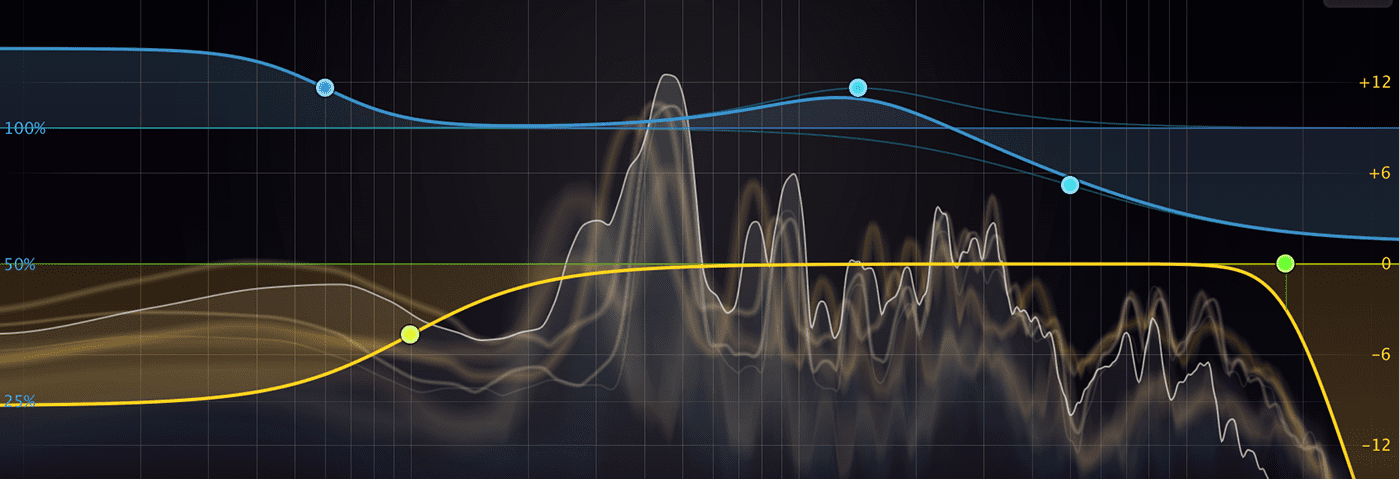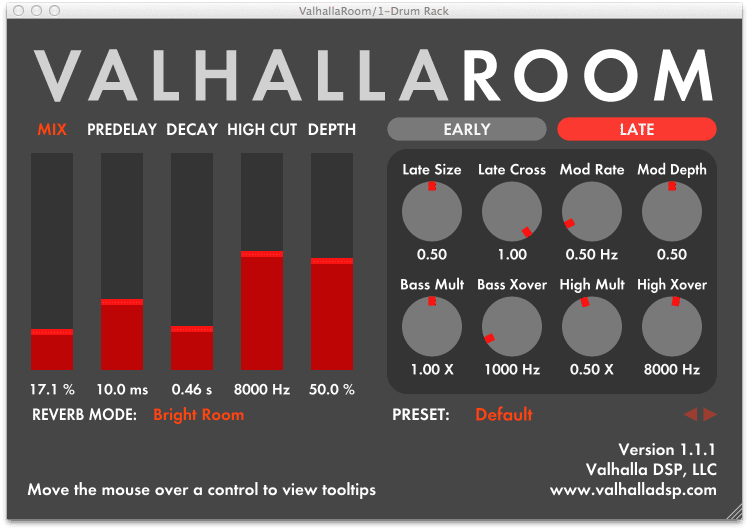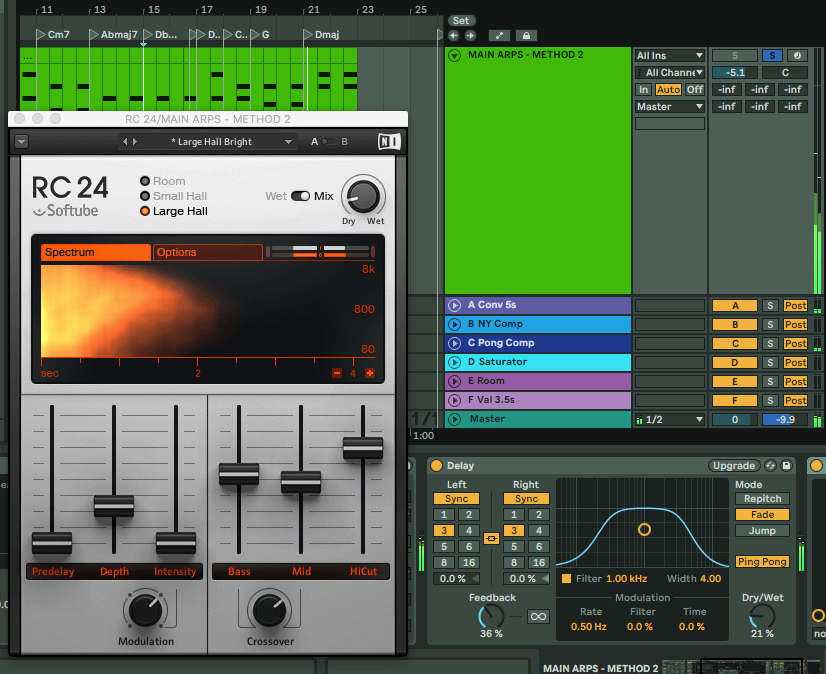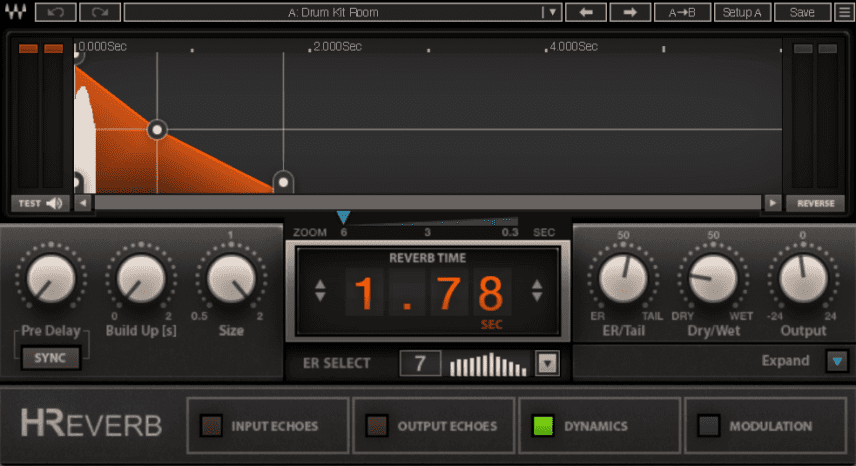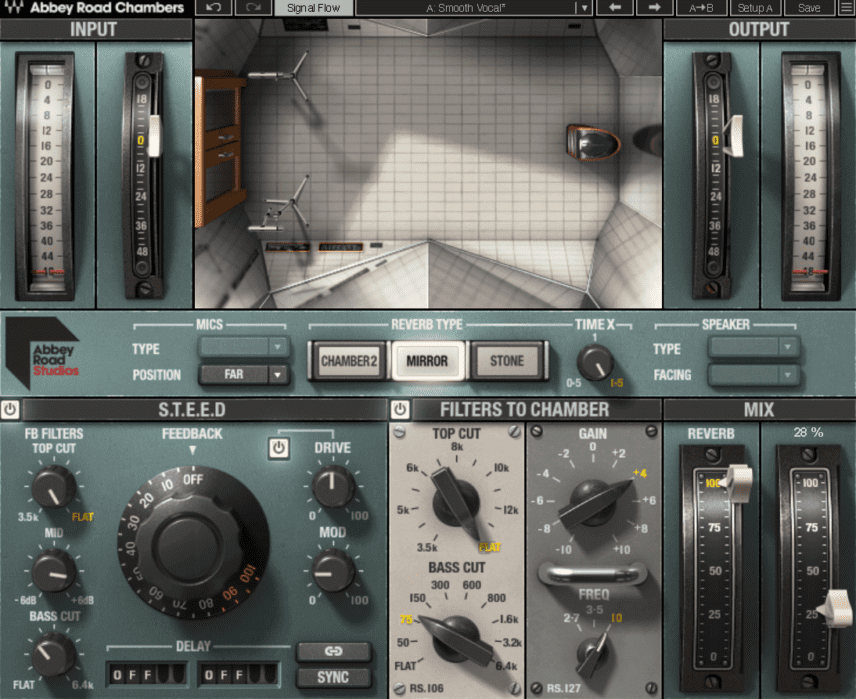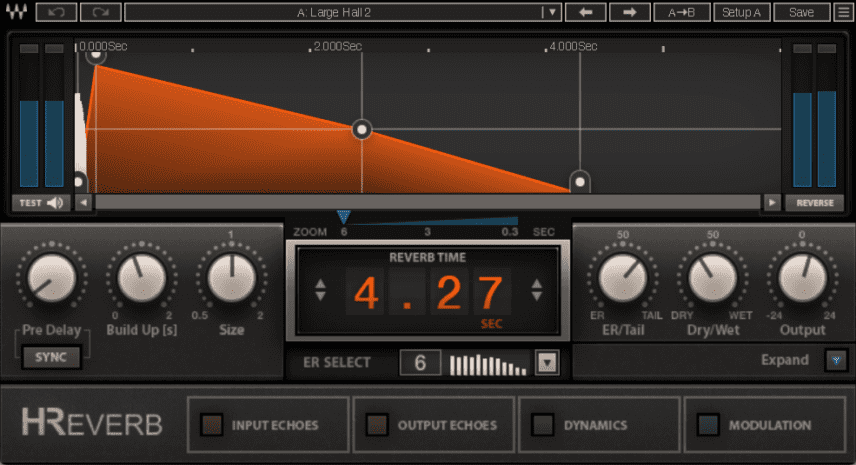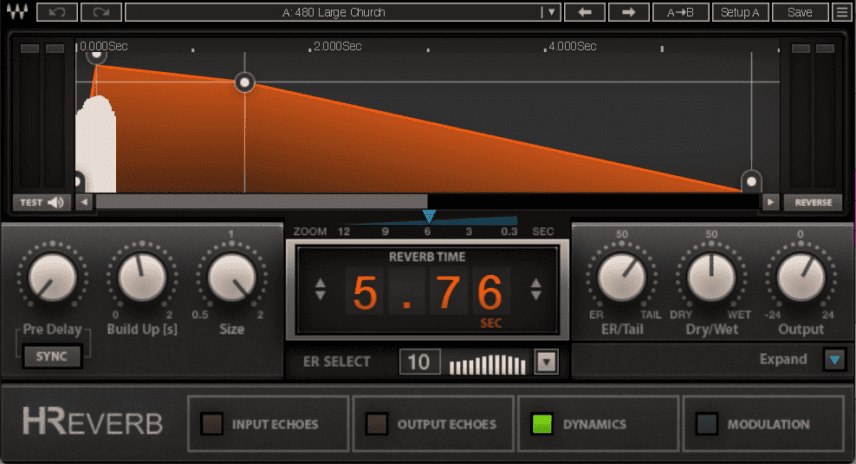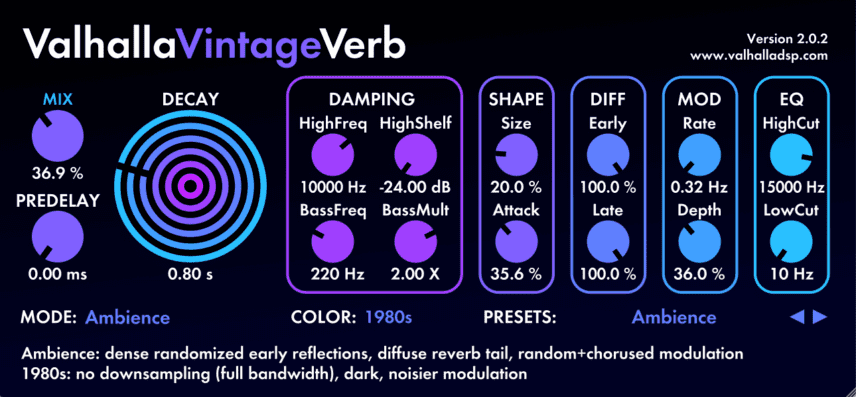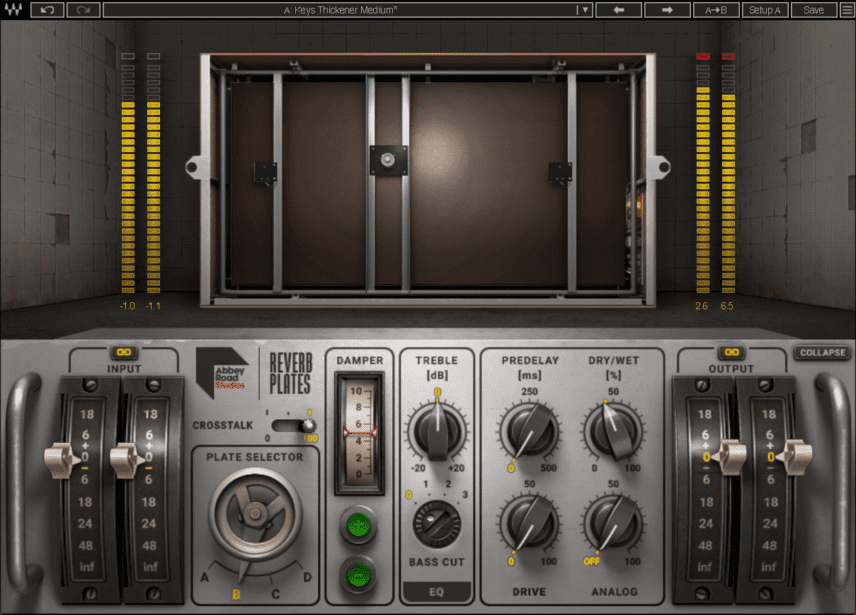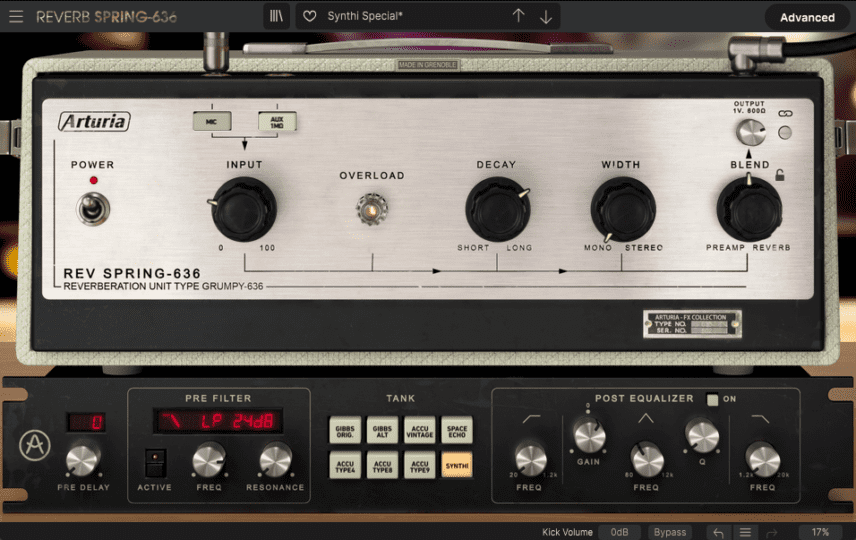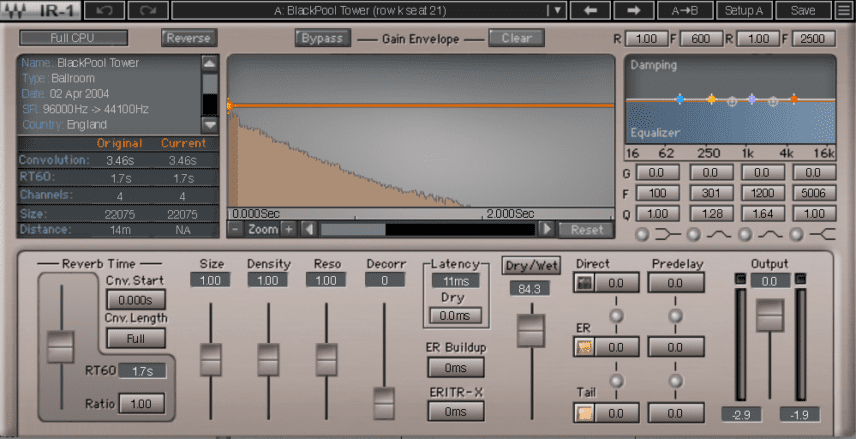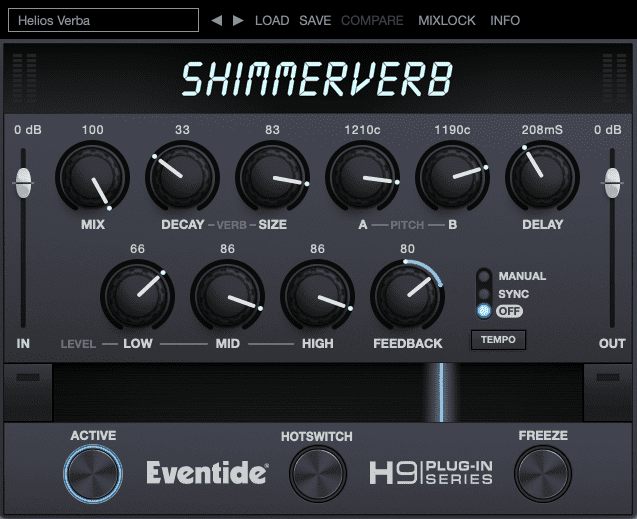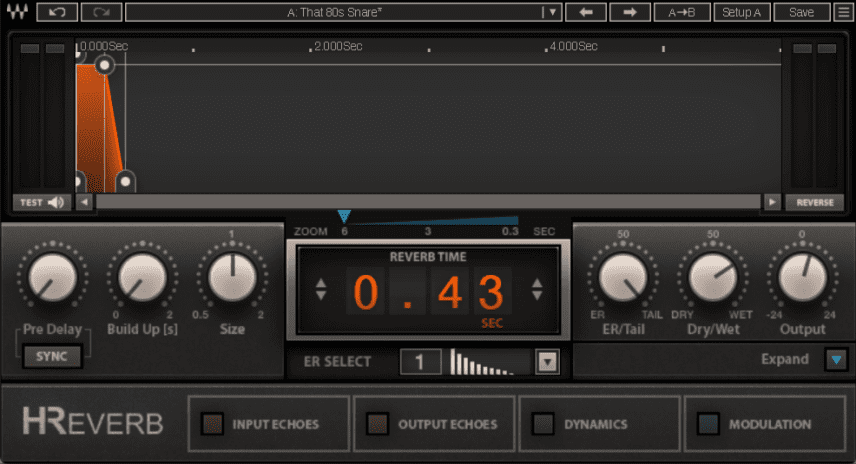Know what the different kinds of reverb mean? If you can’t tell a hall from a chamber, this is the guide for you.
Reverb is one of the most indispensable tools a producer has at their disposal. You’d be hard-pressed to complete a mixdown without using it. And yet a lot of people don’t really know that much about it. Even if you do know your rooms from your ambiences, and your algorithms from your impulses, what kinds of reverb works best on what sound can be difficult to keep track of. If you’re the kind of producer who scrolls through presets, trying different types almost at random because you’re not sure what everything means, then this article is for you.
Before we get into it, we’d like to iterate that these are not rules, just guidelines. While there’s a long history of tradition in recording, and certain reverb types get used with certain instruments often, that doesn’t mean you have to do it this way or that your mix will be crap if you don’t. Mixing is just as creative an activity as composing. If it sounds good, it is good.
If you’d like to know how to best use reverb, check this out.
What Is Reverb?
Before we get into the specifics, it could be helpful to define exactly what reverb is. In a physical space, reverb is sound bouncing off a hard surface and returning to our ears. If it happens one time, it’s an echo. If it happens thousands of times, so that you can’t distinguish between individual echoes, it’s reverb.
When talking about reverb, particularly reverb that we use in the studio, there is some terminology that will be helpful to know.
- Predelay: This is the time in milliseconds between the end of the initial sound and when you can hear the reverb
- Early reflections: These are the first (and usually loudest) reverb reflections to reach your ears. They ‘define’ the shape of the room the sound is occurring in
- Body: The body is the main section of the reverb, or what we think of as reverb
- Decay: Sometimes called size, decay is the time in seconds it takes for the reverb to fade out
Sends Vs Inserts
Should you put your reverb plugin on the channel itself or on a send? Traditionally, reverbs were routed from effects sends. This way you could control the amount of reverb applied to a channel. Sticking a reverb directly on the sound as an insert would swamp the source, usually overwhelming it.
These days, however, most reverb plugins have wet/dry controls, meaning there’s nothing to stop you from using it as an insert. Well, nothing but your computer’s processing power. Placing a reverb on a bus allows you to send many channels through one plugin, thus lightening the CPU hit.
Some people also prefer to limit the number of types of reverbs as this sounds more ‘natural’. In the real world, you wouldn’t listen to a bass in one room, drums in another, and a piano in a cathedral all at the same time. By limiting everything to a few verbs it maintains a sense of reality. But reality can be boring and really has no bearing on electronic music. As we said before, if it sounds good, it is good. To paraphrase Digital Underground, do what you like.
Types Of Reverb
We can think of reverb types in three main categories: physical spaces, mechanical, and digital. Physical spaces are based on actual rooms and buildings. Mechanical reverbs use metal and electricity to approximate natural reverb. Digital reverbs use computer processes to create reverberation. Note that this last one is a bit of a misnomer, as all of the reverbs we’re using are digital. However, for this category, we’re going to highlight reverbs that don’t occur naturally.
Be aware that this list is not exhaustive. There are many types of reverb and given the creativity of plugin developers, new ones are appearing all the time.
Physical Spaces
Room
Rooms are what they sound like: recreations of bedroom-size spaces. These tend to be heavy on the early reflections and predictably short. They’re coloured due to the buildup of mid and low frequencies and have an intimate feel, as you’d expect.
Good for: drums and prominent mix elements
Here is a dry acoustic snare sample from Ableton Live:
And here is the snare run through Waves’ H-Reverb using the Drum Kit Room preset. It has prominent early reflections and a short reverb time of 1.78 seconds.
Chamber
Chambers were originally purpose-built reverb rooms with reflective surfaces inside. Each room had a speaker to play the audio and a microphone to record it and the resulting reverberation. Depending on the material used to make them, chambers can be coloured or transparent and can vary in size.
Good for: vocals and upfront sound
This female vocal sample, ‘SM_Question_My_Love_Amin_Verse2_.wav’, from the Splice pack Soulful Vocals 3, is very dry.
Here it is run through Waves’ Abbey Road Chambers, an emulation of the famous reverb chamber from Abbey Road Studios. The Smooth Vocal preset uses mirrored reflective surfaces for a lush sound.
Hall
The next larger space is hall, or concert hall. Due to their size, these tend to have a natural predelay and density in the reverb tail. They’re neutral in colour and lush. Think big.
Good for: filling in a sparse arrangement and creating a sense of space in a mix.
Here’s a plucky sound made with Arturia Pigments:
And now processed by Waves’ H-Reverb running the Large Hall 2 preset. Notice the reverb time of 4.27 seconds.
Cathedral
Similar to a hall, a cathedral is long and wet with reflective walls.
Good for: same as hall
Here’s the same Pigments pluck:
And now pushed through Waves’ H-Reverb and the 480 Large Church preset. The long reverb time makes a noticeable difference.
Ambience
Ambience is a very short reverb used to add dimension to a sound without adding wetness. It can also make a mix sound more natural when used on busses by placing everything into the same ‘space’.
Good for: synthesizers, glue on mix groups
Let’s see how it sounds on this percussion loop, ‘ph_120_percussion_loop_ensemble.wav’ from the Splice pack, Piano House.
Here it is with ambience provided by Valhalla VintageVerb.
Mechanical
Plate
A plate reverb is a large box with a metal sheet suspended inside. This is vibrated by a transducer transmitting an audio signal, where it is recorded by a microphone attached to the sheet. Plate reverbs sound less ‘natural’ than rooms, with a nice smoothness as well as a body that starts bright and then gets darker over time.
Good for: vocals, leads, pads, blending with other reverbs
Here we have the sample ‘CHROME_SPARKS_synth_loop_classical_moog_01_hi_Amin.wav’ from the Splice pack Chrome Sounds by Chrome Sparks. The sample has a short, room-like reverb already baked in.
Here it is running through Waves’ Abbey Road Plates, a recreation of the famous plate reverb at Abbey Road Studios.
Spring
Spring reverbs, like plates, use metal, a transducer, and a microphone to create a reverb. But rather than a very large metal sheet, they’re done with (can you guess?) springs. They first appeared in guitar amps and PA mixers in the ‘60s and ‘70s but have made something of a comeback lately thanks to Eurorack and the Moog Grandmother. They have a dark and unsurprisingly metallic sound.
Good for: short sounds with a strong transient like percussion, or drones
Here we have an arpeggiated line from Collision, one of Ableton Live’s physical modelling synths.
Here it is again, this time processed through Arturia’s Reverb Spring-636.
Digital
Convolution
Convolution is less a type of reverb than a method of delivery. Most reverbs you encounter in the computer (or even in hardware) are algorithmic reverbs. They recreate the behaviour of reverbs with math. Convolution reverbs instead use samples (called impulse responses) of actual spaces. The benefit of this is you can recreate the reverb response of specific places, such as studio rooms, grain silos, forests, you name it.
Good for: pretty much anything
Here is a chord progression played on Ableton Live’s Operator.
And now run through Waves’ IR-1 Convolution Reverb with a convolution of Blackpool Tower.
Shimmer
Where convolution reverbs can get you into specific spaces, algorithmic reverbs can get you into fantastical ones. Shimmer is an effect that pairs reverb with a pitch shifter, creating rising or cascading sheets of sound. It was extremely popular in the ‘80s and ‘90s and still sounds great, especially in ambient music.
Good for: pads, ambient sounds
Here’s the same FM piano chord progression from before:
And now with Eventide Audio’s ShimmerVerb on it, with the wet/dry balance fully wet:
Non-Linear
Another example of a fantastical algorithmic reverb is the non-linear reverb. Linear reverbs are based around real reverbs and so decay naturally. Non-linear reverbs do not. The famous ‘80s gated snare is a perfect example with its abrupt and truncated reverb tail. This effect was also used by Chicago acid house producers.
Good for: 80s drums, acid house, sound design
This FM koto from Ableton Live’s Operator has very little release.
When run through the preset, That 80s Snare, in Waves H-Reverb the abrupt reverb tail is easy to hear.
*Attack Magazine is supported by its audience. When you purchase through links on our site, we may earn an affiliate commission. Learn more.
